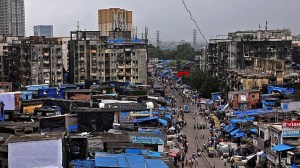Will weather aid in Delhi’s pollution fight like last year? Unlikely, say experts
According to an analysis by the Centre for Science and Environment, last winter, the average PM 2.5 level in the city was the lowest from 2018-19 onwards.
 Meanwhile, satellite data from the Indian Agricultural Research Institute (IARI) shows that Punjab has recorded 456 crop residue burning events so far this season, while there have been 120 such instances in Haryana. (Express File Photo)
Meanwhile, satellite data from the Indian Agricultural Research Institute (IARI) shows that Punjab has recorded 456 crop residue burning events so far this season, while there have been 120 such instances in Haryana. (Express File Photo) With the paddy harvest and instances of stubble burning having picked up pace in the northern districts of Punjab, and winter around the corner, how is Delhi’s air quality likely to fare this winter?
According to experts, the meteorological factors that helped keep Delhi’s air cleaner than usual last winter may not extend into the upcoming winter.
Gufran Beig, founder-project director, System of Air Quality and Weather Forecasting and Research (SAFAR), said, “Last year, there were natural factors that came to NCR’s rescue. Wind speeds were higher for a majority of the time. But this year, that is unlikely because La Nina conditions are not there. Last year, due to La Nina conditions, winds in the northern part of India were faster, while it was calmer over the southwestern part of the country. That is one of the reasons that in the southwest, in Mumbai and other places, air quality had worsened. But in Delhi it was better relative to the previous year. This is unlikely in an El Nino year. This year, festivals are also around the time when it is colder. Steps will have to be taken.”
La Nina refers to abnormally cool sea surface temperatures in the equatorial Pacific Ocean, while El Nino is the phenomenon of warmer waters in the Pacific Ocean.
Last year, on the day after Diwali for instance, higher wind speeds had helped disperse pollutants, and Diwali was in October, when colder conditions had not yet set in.
According to an analysis by the Centre for Science and Environment, last winter, the average PM 2.5 level in the city was the lowest from 2018-19 onwards. In November 2022, the daily peak contribution of stubble burning to PM 2.5 levels in Delhi was also lower than previous years, standing at 34%. This figure was over 40% in 2021, 2020 and 2019.
Meanwhile, satellite data from the Indian Agricultural Research Institute (IARI) shows that Punjab has recorded 456 crop residue burning events so far this season, while there have been 120 such instances in Haryana.
VK Sehgal, Principal Scientist, IARI, said that in Punjab, the instances are mostly in Amritsar and Tarn Taran.
“Harvesting has begun and peak of harvesting would come somewhere around the last week of October and first week of November,” he said.
Delhi’s AQI was 146 in the ‘moderate’ category on Monday. According to the Air Quality Early Warning System for Delhi, the AQI is likely to remain in the ‘moderate’ category from October 3 to 5.
The Graded Response Action Plan (GRAP) came into effect on October 1, which means that measures under GRAP can begin to be invoked when the AQI is in the ‘poor’ category (201 to 300).







